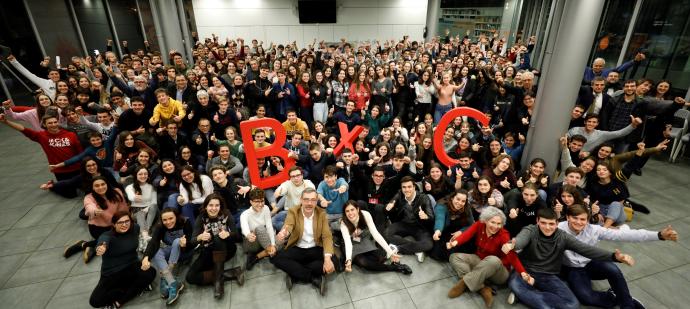27 High School students will interact during 16 work sessions with researchers from all the participating excellence centers offering exciting experiences that explore the biggest and the smallest scales of the universe. Coordinated with the ICN2 and the IFAE, Mad for Physics (Bojos per la Física) also involves the UAB, the ICMAB, the ICFO, the ICE, the UB and the Alba Synchrotron.

The Fundació Catalunya / La Pedrera developed a Program to open the doors of the most influential research institutes to the most excellent High School students. ICN2 and IFAE led in 2016 the successful first edition of Mad for Physics (Bojos per la Física), an initiative that has grown bigger and stronger year after year involving the Universitat Autònoma de Barcelona, the ICMAB, the ICFO, the ICE, the UB and the Alba Synchrotron.
On January 10 students from all over Catalonia met at Mon Sant Benet to launch a new edition of Mad for Science (Bojos per la Ciència), involving 12 different programs covering a wide range of scientific disciplines. The students and their families gathered with the program organisers in an emotive presentation event which included the participation of a former participant of Crazy for Biomedicine, Eric Matamoros
The fifth edition of Mad for Physics will allow 25 students to interact during 16 work sessions with researchers from all the participating excellence centers offering exciting experiences that explore the biggest and the smallest scales of the universe. The shared objective is to offer a challenging experience for the students and give them some hints about what being a researcher in physics means.
The ICN2 Marketing and Communication Department is coordinating the institutional participation of the ICN2 in this programme. The long list of Groups that make it possible includes the Electron Microscopy Unit; the Inorganic Nanoparticles Group; the Nanobioelectronics and Biosensors Group; the Magnetic Nanostructures Group; the Physics and Engineering of Nanodevices Group; and, the Theoretical and Computational Nanoscience Group. The researchers were involved in the selection process, which started with 200 candidates, together with the ICN2 Marketing & Communication and Human Resources Departments.

